Typical Climate of Georgia
In the western part of Georgia, the climate is subtropical, with hot summers and mild winters. The eastern region experiences a dry, moderate continental climate, with cooler temperatures in winter and warmer days in summer. Generally speaking, Georgia offers a pleasantly moderate climate year-round. Summers are warm, while falls are sunny yet brisk. Winters offer mild temperatures ranging from 50 to 60 degrees Fahrenheit. In addition, there is usually light snowfall in the mountains and virtually none elsewhere throughout the winter. Springtime brings blooming dogwoods and azaleas that add color to the countryside. Average rainfall each year helps keep everything lush and green, making it an ideal place for outdoor activities all season long. Here, however, we’ll discover Georgia’s coldest January on record.
Coldest January on Record
The coldest January ever recorded in Georgia was set on January 27, 1940, in a region of northwestern Georgia known as “The Pocket” in Floyd County. Georgia’s coldest January day was a bone-chilling -17°F! This area is characterized by low-lying terrain and ridges on both sides that trap the icy air and create perfect conditions for temperatures to plummet. It also reached -17°F in Chatsworth, in Murray County, on the same day. What a shock for the Peach State!
This day was both the coldest January in Georgia and also the coldest Georgia day of all time. On that night, several inches of snow had also recently fallen, further contributing to the record-breaking chill. Elsewhere around the southeastern US, arctic air mass drifted down, setting records across many cities with temperatures reaching below zero degrees in some places. It’s hard to imagine such a low temperature being possible. Still, this remarkable event shows how much Georgia’s climate can vary depending on weather patterns and location.
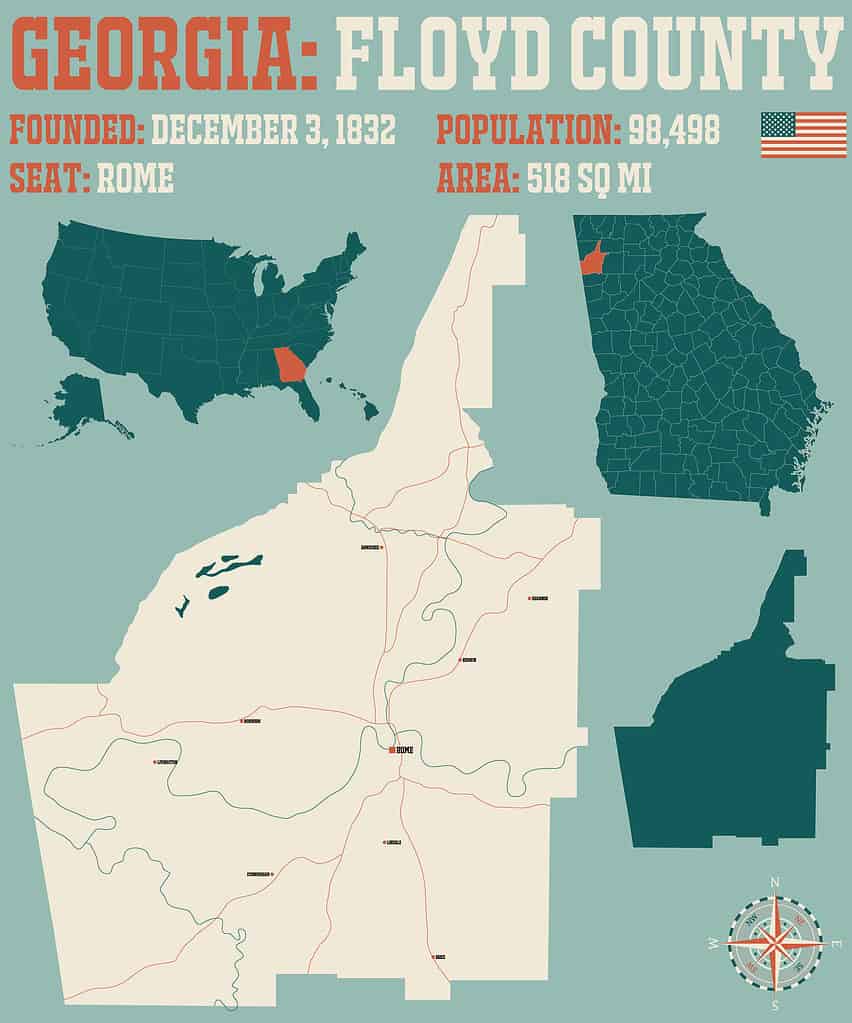
The coldest January ever recorded in Georgia was set on January 27, 1940, in Floyd County.
©1286129436/Shutterstock.com
How Animals Survive Georgia Winters
Wild animals have adapted to survive the cold winter months in Georgia. Many songbirds, such as certain types of swallows, thrushes, tanagers, vireos, and warblers, migrate further south for the winter season so that they can find food more easily. But many other types of birds travel to Georgia from cold northern regions during the winter.
In addition to these migratory birds that inhabit our backyards during the winter season, other wild animals live in Georgia, such as rabbits and squirrels, who change their behavior patterns and diet depending on what type of food is available. They will eat more bark from trees or dig up small plants if they need additional sustenance due to the lack of insects or berries, which may not be available in colder temperatures.
Additionally, some wildlife creatures will huddle together in dens or burrows where it’s warmer and easier for them to conserve energy during harsh winters. Even though winter is a difficult time for many animals, they have developed strategies over thousands of years to help them survive even the coldest January on record!
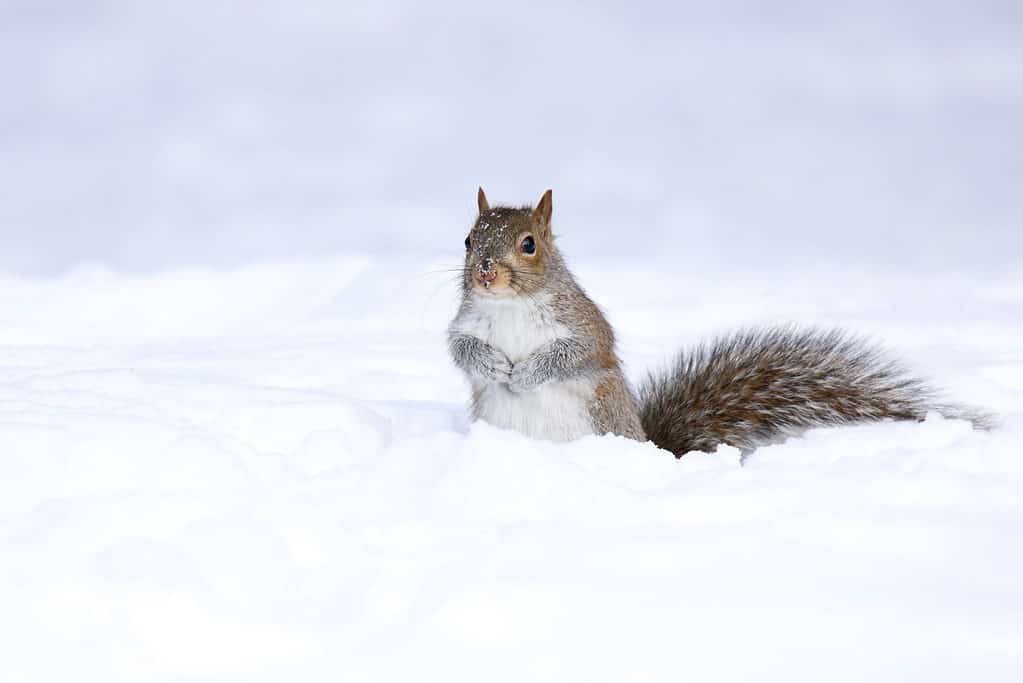
Squirrels will change their behavior patterns and diet depending on what type of food is available to adapt during colder temperatures.
©iStock.com/suefeldberg
Thicker Fur and Fat
The mammals of Georgia are known to be able to endure such harsh winter temperatures. This is because they are endotherms, which means they can generate their own heat. This is in contrast to ectothermic animals like reptiles, amphibians, and fish, whose body temperatures change with their environment. Thus, many mammals, such as deer, bobcats, and river otters, grow thicker fur coats that insulate them against the cold.
In preparation for the cold winter months, mammals such as bears and squirrels will put on an extra layer of fat to insulate themselves from harsh temperatures. This insulation provides warmth and energy that can be used when food is scarce in the winter months.

Many animals grow thick winter coats and an extra layer of fat to survive the cold.
©Tatyana Step/Shutterstock.com
Hibernation
As temperatures in Georgia drop to record-breaking lows in January, some mammals enter a deep state of hibernation. During true hibernation, animals enter a torpor state: their breathing and heart rate slow significantly, and their metabolism drops incredibly low as they conserve energy. This means that even if the temperature rises briefly during the winter months, these animals will not wake up to eat or drink – instead, they stay asleep until springtime, when it is warm enough for them to reemerge from their winter slumber. Some animals in Georgia that hibernate are bats, chipmunks, and groundhogs.
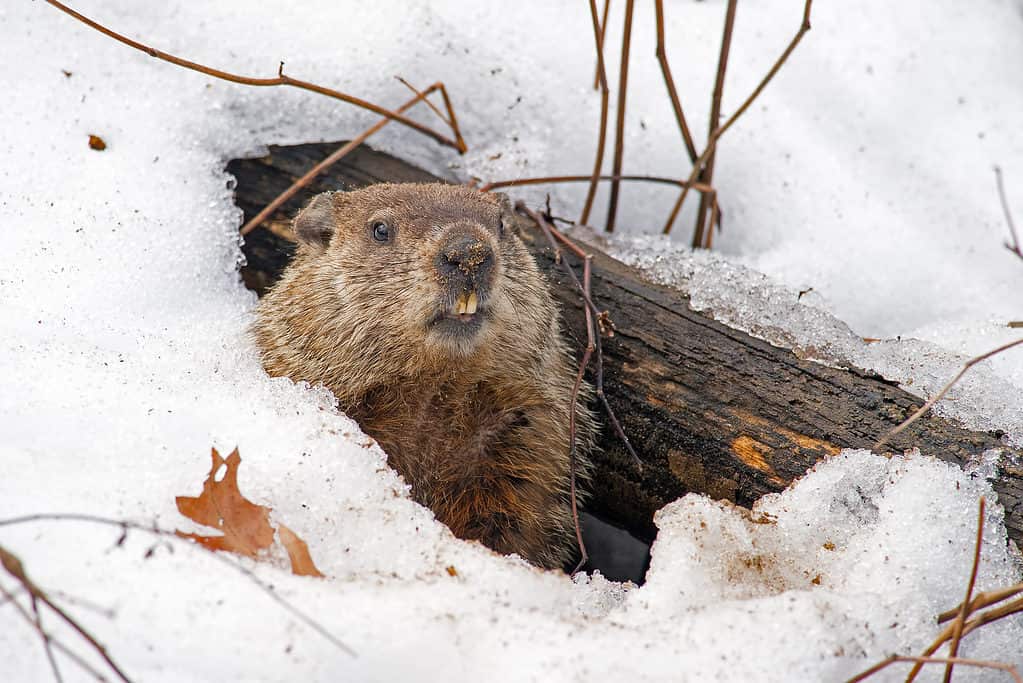
Many animals such as the groundhog will enter true hibernation during winter to survive the cold.
©Brian E Kushner/Shutterstock.com
Torpor
In the winter months, some animals have a unique way of surviving the cold temperatures: torpor. This state is similar to hibernation, but it is only temporary and not as deep. During this time, animals reduce their activity level in order to save energy and conserve heat. Some species even huddle together for extra warmth.
Chipmunks, squirrels, raccoons, skunks, and bears are all known to enter into a state of torpor during colder times of the year. When conditions become more hospitable with higher temperatures and longer days, these animals will wake up from their slumber and return to their regular activities. So while you may think that Georgia’s coldest January on record was too frigid for animal life, rest assured that many creatures were able to survive thanks in part to their ability to endure through torpor!
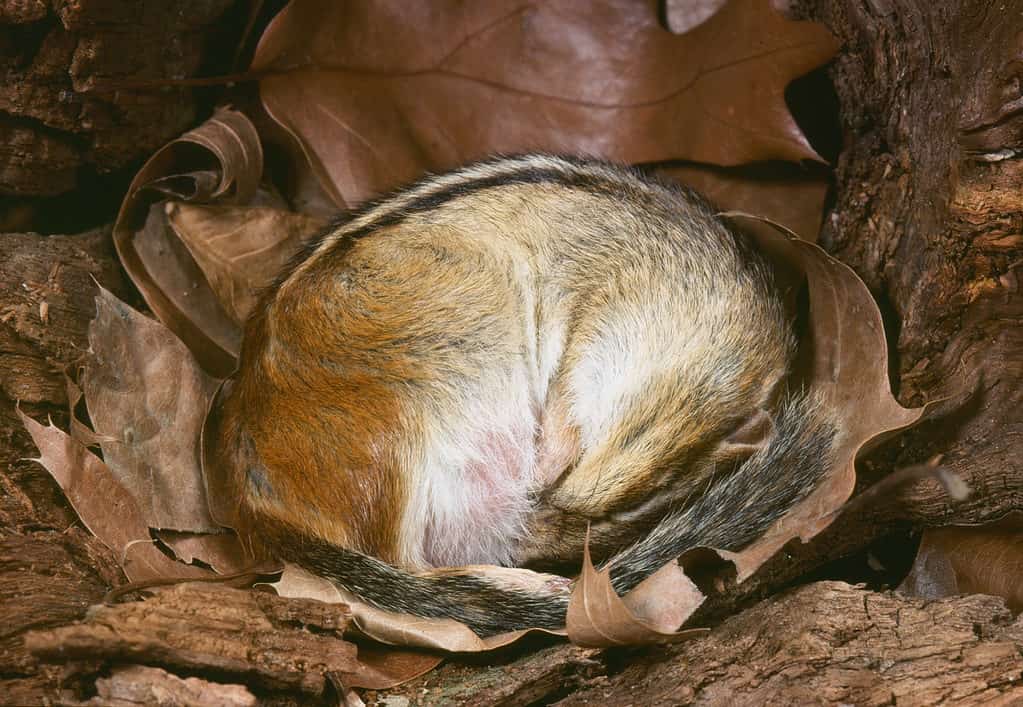
Some animals enter a state of torpor as a survival technique during cold winter temperatures.
©Breck P. Kent/Shutterstock.com
Brumation
Brumation is the process of hibernation in cold-blooded reptiles and amphibians. During this period, they are dependent on their environment to maintain their body temperatures as they cannot do so themselves as warm-blooded creatures can.
For example, snakes and lizards living in higher elevations will find a hibernaculum, such as a cave or rock ledge where multiple species may gather together. Aquatic turtles spend most of this time in a lethargic state at the bottom of ponds or lakes, sometimes slowly crawling or drifting along. Eastern box turtles usually burrow under logs, compost piles, or soft soil for protection during these colder months.
Reptiles and amphibians are the most resilient animals when it comes to cold weather. Even though they may not be as active as usual due to brumation, they will still emerge from their hiding spots so they can scavenge for sustenance. If you observe closely enough, you might spot some turtles basking in the sun or frogs hopping around looking for insects!
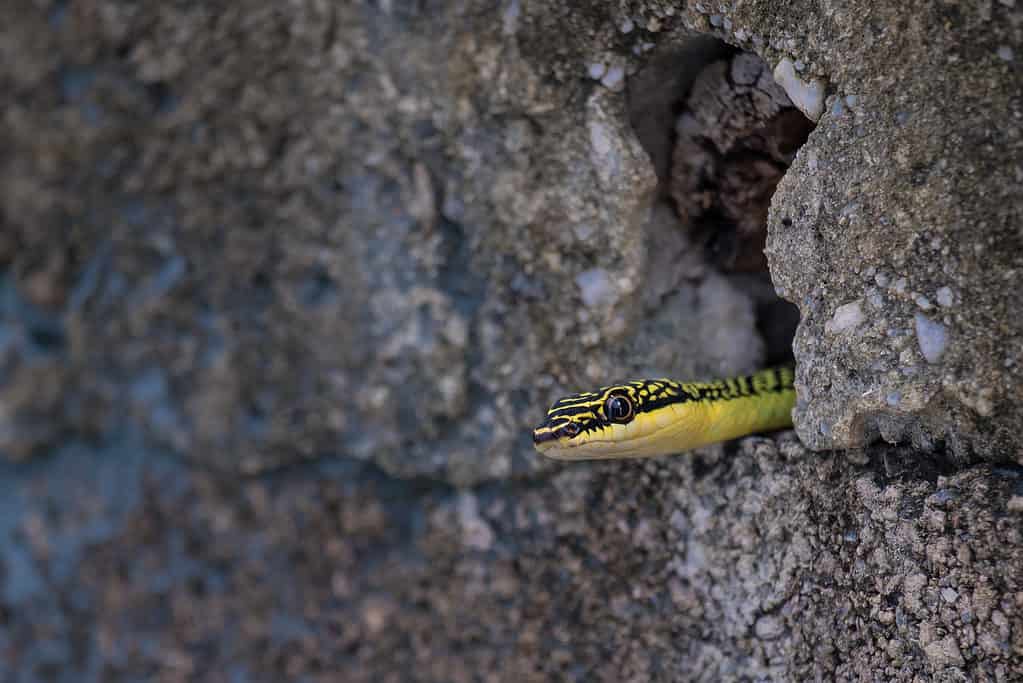
Snakes enter a state of brumation to survive the winter. Often snuggling up in groups to stay warm.
©Attapol Yiemsiriwut/Shutterstock.com
Diapause
Insects enter a state of dormancy called diapause in the winter. This means they stop developing further until spring. Unlike other animals, which remain active until the temperatures drop, insects enter diapause in the fall before it gets too bitterly cold for them to bear. Even if the weather becomes warm again, the insect will remain in its suspended state until spring. You can often find insects overwintering under leaf litter or brush piles in your garden.
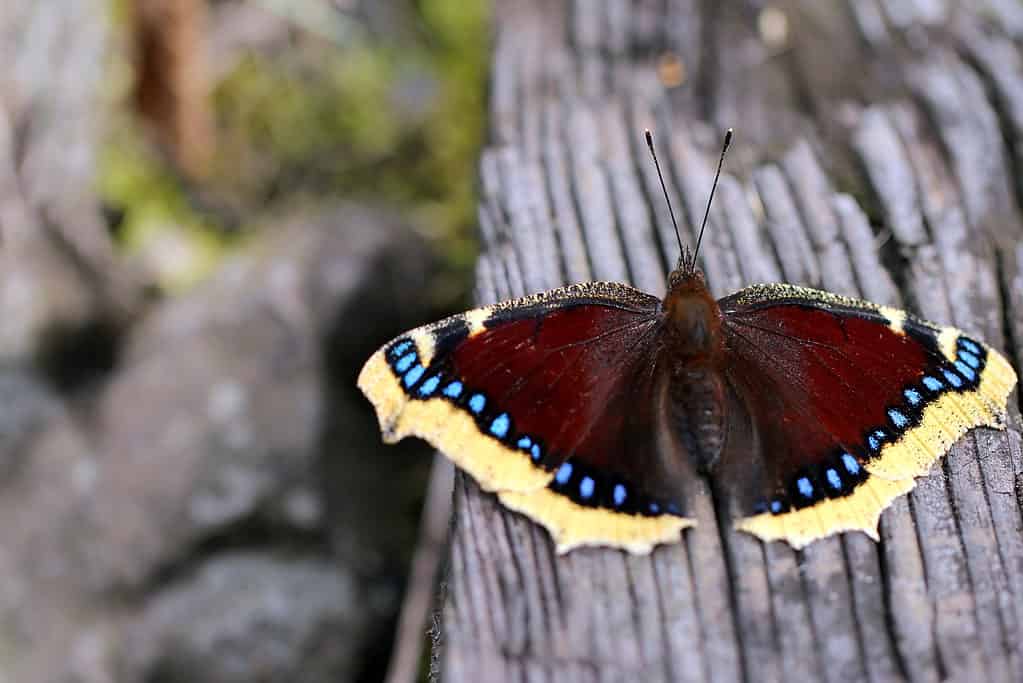
Many insects, such as the Mourning Cloak Butterfly, enter a dormant state called diapause during winter to survive the cold.
©Marek Mierzejewski/Shutterstock.com
Migration
The migration of animals from one location to another is typically done in order to change habitats or living environments. This can be something as simple as birds flying south for the winter, but it can also involve more complex journeys involving changes in altitude or even round trips to multiple locations.
The time it takes to complete the journey will vary based on the distance traveled. Migration is often triggered by factors like the length of daylight hours, changes in available food, and the amount of energy required to stay warm.
Although migrating to escape winter might seem like a good idea, it’s actually very stressful for animals. They have to expend a lot of energy to travel, and then once they arrive at their destination, they have to compete with native species for resources like food and shelter.
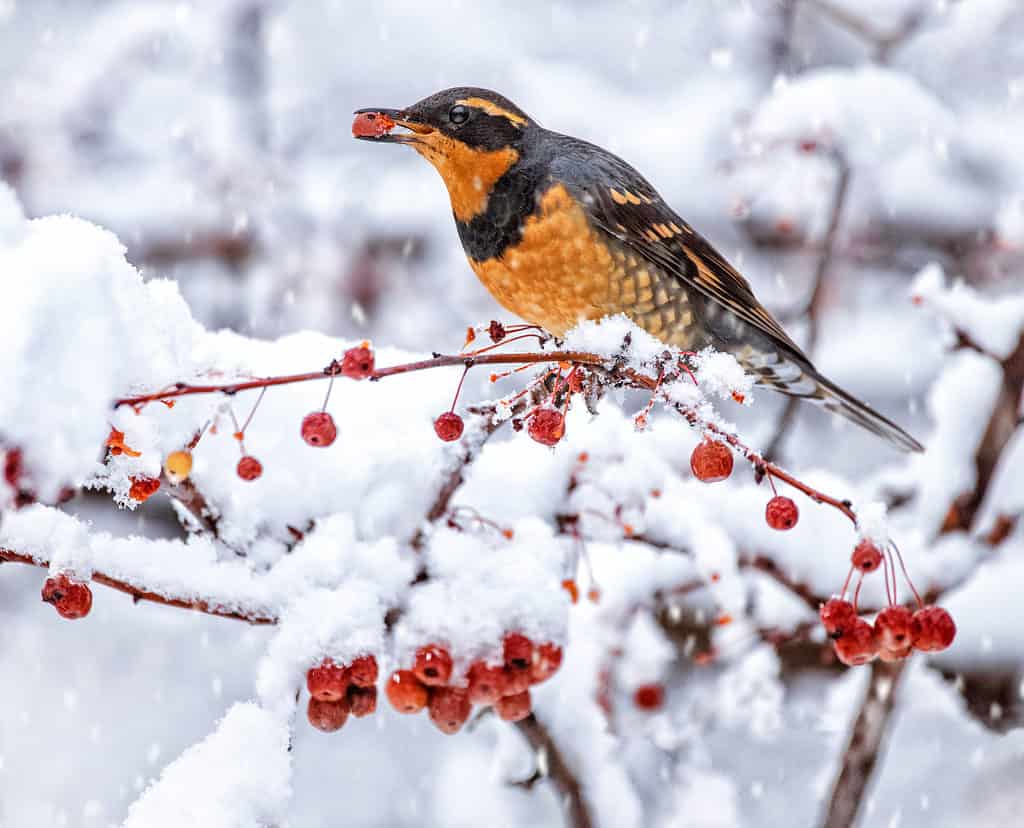
Many birds migrate to Georgia to stay warm in winter, while some migrate further to
South America
.
©Annette Shaff/Shutterstock.com
How to Help Wildlife Overwinter in Georgia
One way to help the wildlife of Georgia survive during a cold winter is by offering food sources. Bird feeders and reliable watering holes are an easy and attractive way to provide sustenance for birds, while squirrels and chipmunks can enjoy cracked corn or sunflower seeds scattered in your yard.
Planting shrubs that bear berries can also provide much-needed nourishment for animals like mockingbirds, nuthatches, woodpeckers, titmice, and cardinals.
Other tips include leaving dead trees and logs. These serve as vital homes for many species of wildlife throughout the freezing months. Additionally, providing shelter in the form of brush piles or even nesting boxes offers refuge from predators and bitter temperatures alike.
Only clean up some of the leaves and dead flowers from your plants in the fall. Let them stay for a while to provide homes for butterfly larvae, bird nesting materials, and seeds for many hungry critters.
The photo featured at the top of this post is © iStock.com/trekandshoot
Sources
- Georgia Wildlife, Available here: https://georgiawildlife.com/out-my-backdoor-make-your-yard-winter-wildlife-wonderland
- Tennessee Aquarium, Available here: https://tnaqua.org/riverwatch/winter-wildlife-how-southeastern-species-survive-in-cold-weather
- Chattahoochee, Available here: https://www.chattnaturecenter.org/blog/animals-dont-necessarily-hibernate-in-winter
- The Atlanta Journal Constitution, Available here: https://www.ajc.com/life/wild-georgia-many-birds-move-to-state-for-winter/W6W5ZPXCCFBSPCL22VUJLA7J7Y
- Humane Society, Available here: https://www.humanesociety.org/resources/help-backyard-wildlife-prepare-cold-weather
- University of Georgia, Available here: https://site.extension.uga.edu/climate/2021/01/video-the-coldest-temperature-recorded-in-georgia
Thank you for reading! Have some feedback for us? Contact the AZ Animals editorial team.






